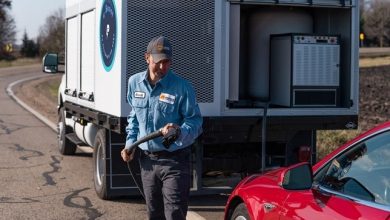UK EV sales surge in April 2020
UK electric vehicle sales surged in April 2020 amid lockdowns from COVID-19. The Tesla Model 3 led the way along with the Jaguar I-PACE. 32% of all new car registrations were from EVs. Though EV sales are usually on back-order from prior months while traditional cars are bought in quicker order, so true picture will emerge in coming months.
Nevertheless, EVs are a huge wild card for utility companies both internationally and in the USA. While efficiency means less electricity demand over time, EVs could lead to an uptick in residential load.
Another feature of plug-in EVs is when they will in fact be plugged-in. Obviously the consumer will drive to work in the morning (we think – we’re not sure now following the impacts of COVID-19 and the work-from-home movement), then return in the evening. The EV is then charged overnight.
Overnight charging creates a new demand curve. Currently, usage is soft overnight when everyone is sleeping and few appliances are running, then demand jumps when folks wake up & turn on lights, make coffee etc. An afternoon valley shape takes place as individuals are off at work and kids are at school. Finally, demand usually hits a peak for the day in the evening when dinner is made, lights get turned on, the AC or heater is cranking along, depending on the time of year.
So how does an EV change this? It might flatten the curve (to use a 2020ism). We could see more demand during the off-peak periods when the car charges. This shape change also would have price implications. Perhaps the off-peak becomes more expensive. Maybe the on-peak becomes less expensive as individuals, in a sense, arbitrage the market – or just more effectively plug-in during cheaper hours.
Utilities will have to quickly pivot to how the EV market evolves. COVID-19 is a game-alterer for sure. Low oil prices could hinder the adoption of EVs, despite the dramatic UK headline from April.
Source: www.thestreet.com


